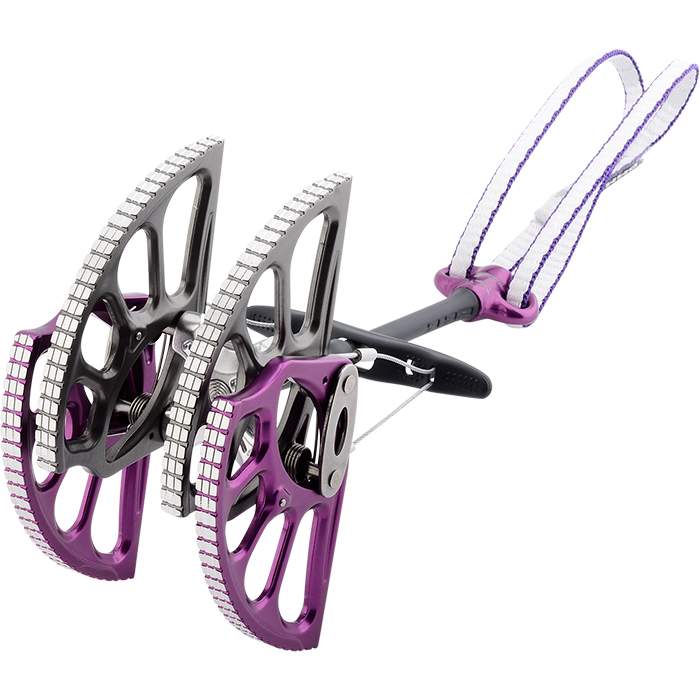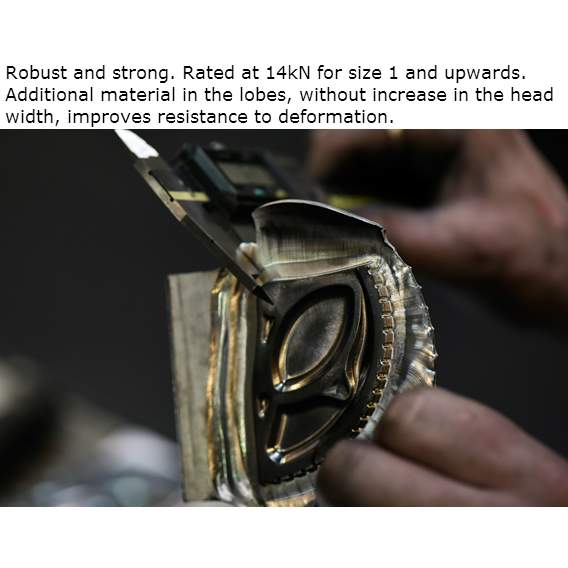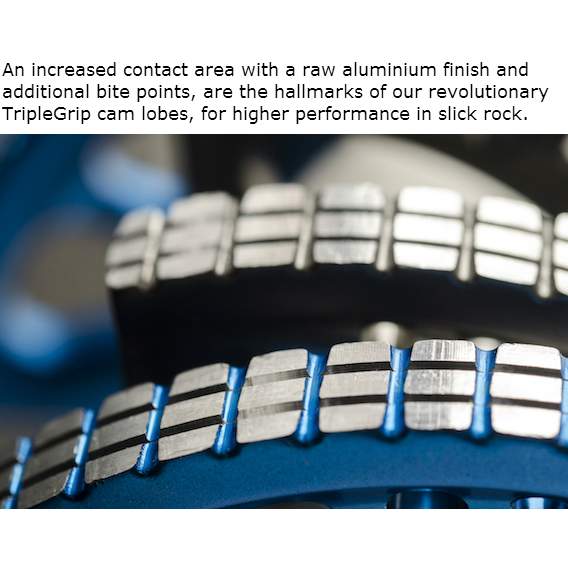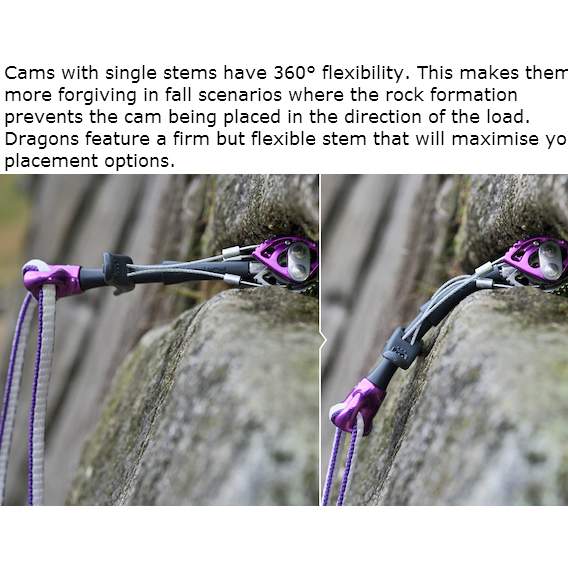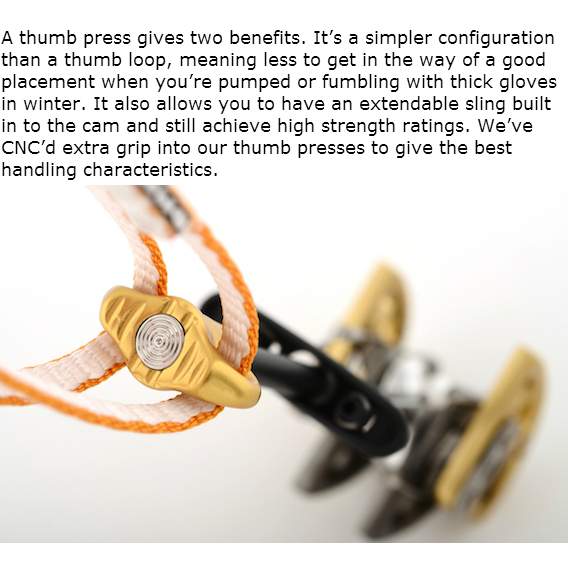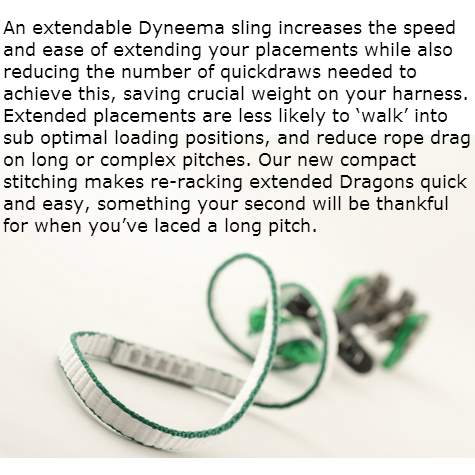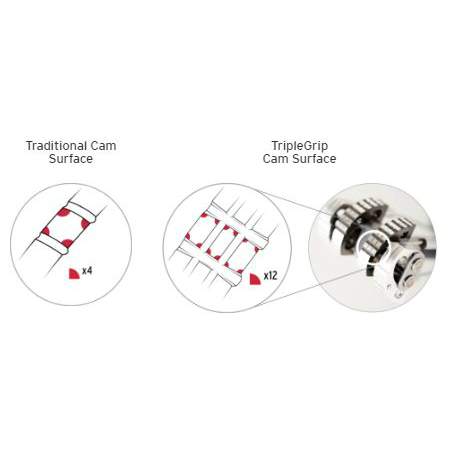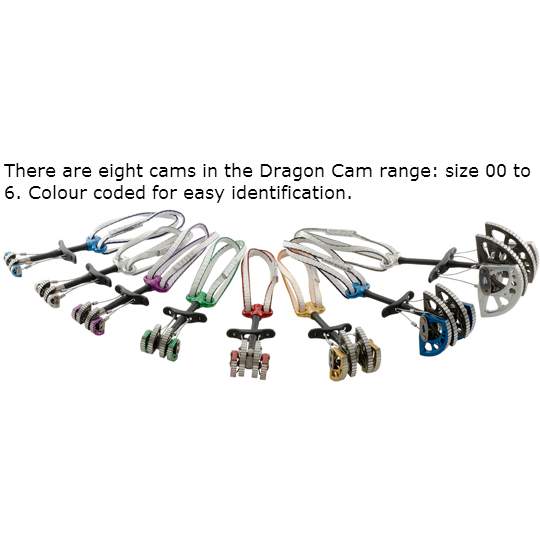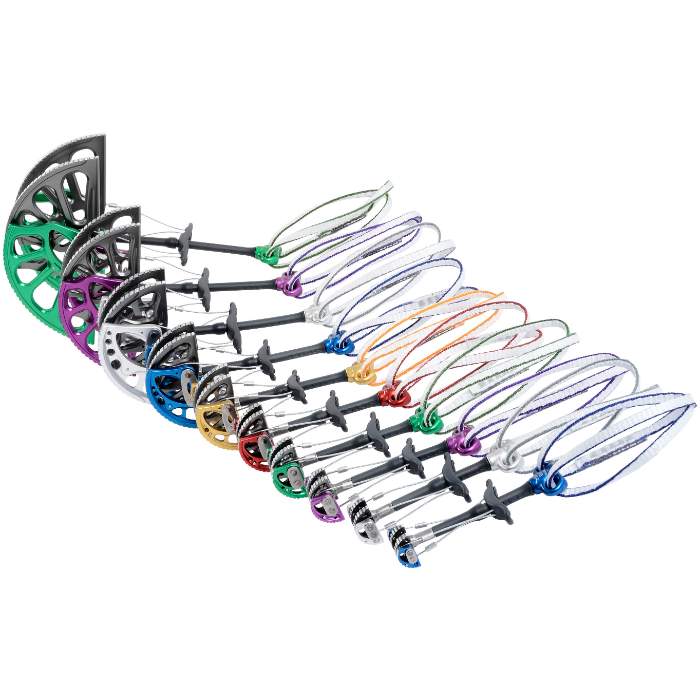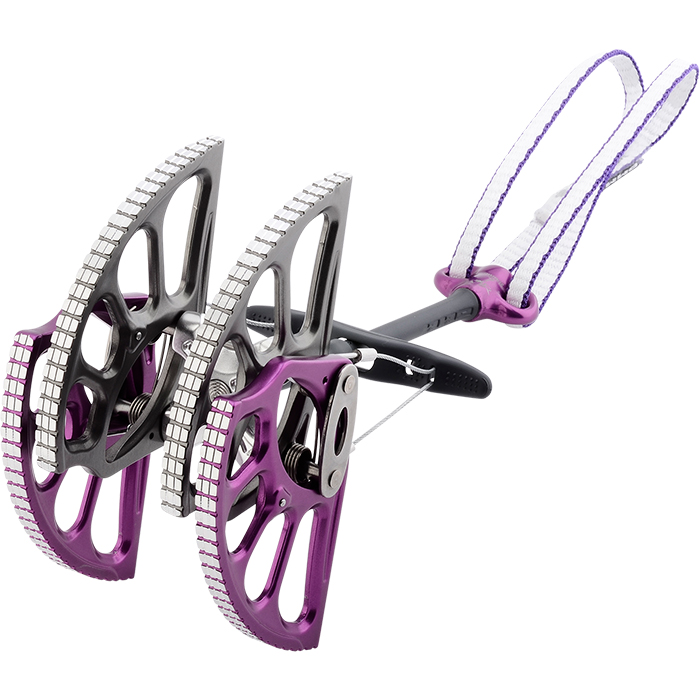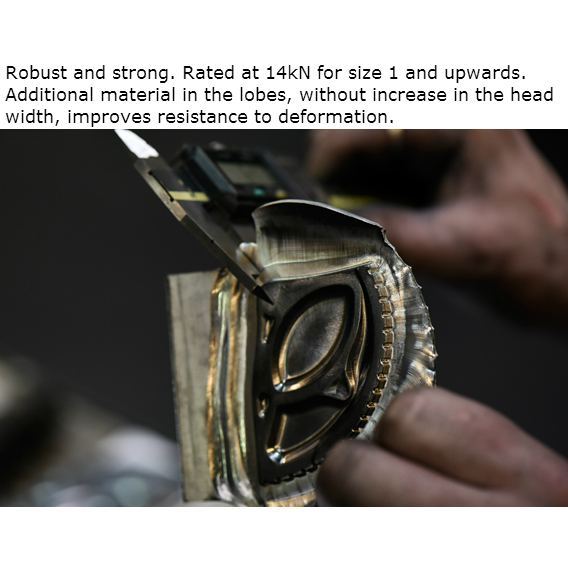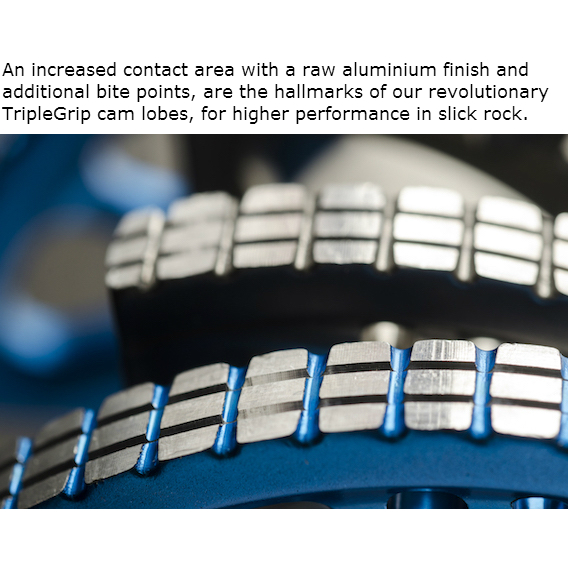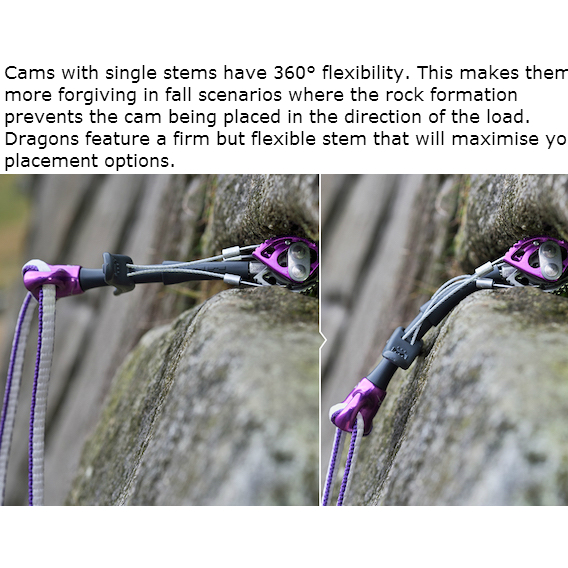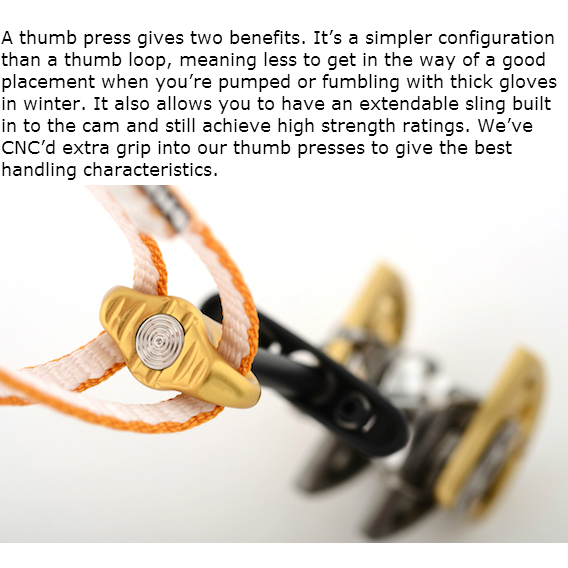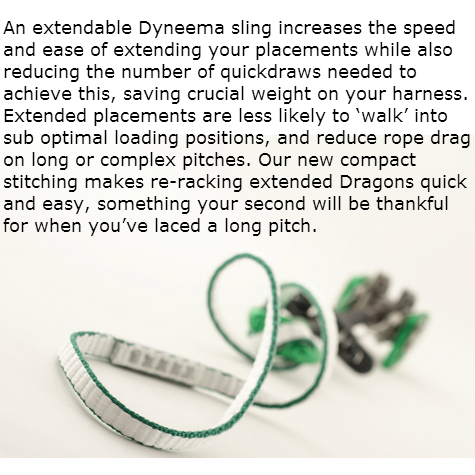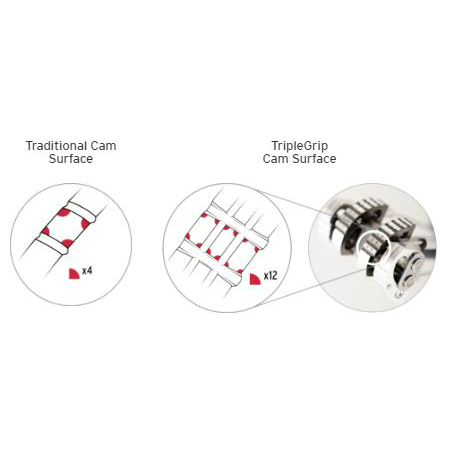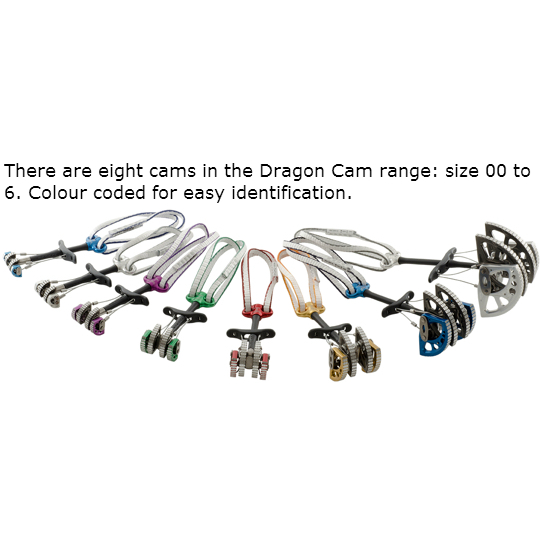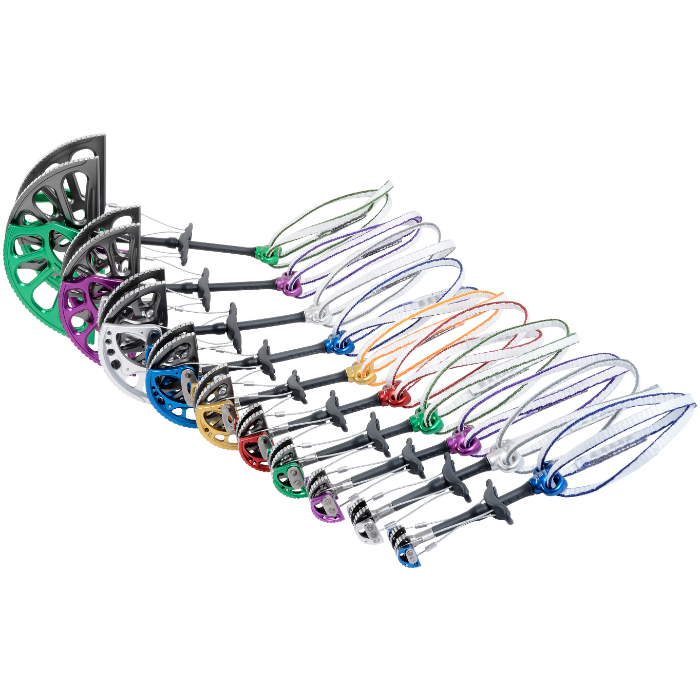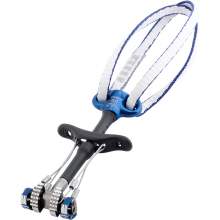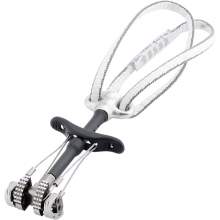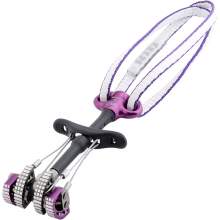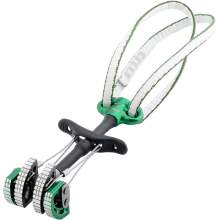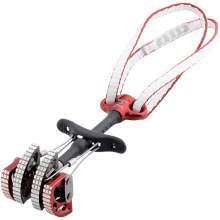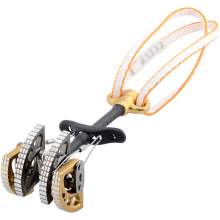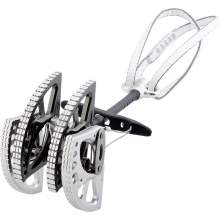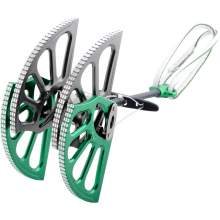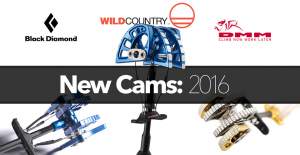How to use DMM Cam, warning, lifespan, inspection, care and maintenance with instructional pictures.
Dragon 7
Description
The Dragon's striking TripleGrip cam lobes feature an increased contact area with a raw aluminium finish and additional bite points. These features work together to increase friction between the cam lobe and the rock it's placed in. This increases holding power and reduces walking, particularly in slick or soft rock types and marginal placements.
Single stem, dual axle design gives Dragon cams 360° flexibility and a substantial expansion range, increasing performance in sub-optimal placements and helping you get the right piece first time. The Dragon cams hot-forged thumb press gives stable handling and reduces fumbling from gloved hands and pumped fingers. It allows the Dragon to have an extendable sling with no strength penalty, reducing the number of quickdraws needed to extend placements and minimising rack weight.
Retail price
When you click a link below and then checkout online, no matter what you buy (climbing gear or not), we get a small commission that helps us keep this site up-to-date. Thanks!
Weight (g / oz)  Weight (g / oz)In grams and ounces, the weight, as stated by the manufacturer/brand. | 362.0 g / 12.76 oz |
| Cam Head | 4 lobes, double axle |
| Offset | No offset |
| Stem | Flexible single stem |
| Sling | x8 mm Dyneema (double sling loop) |
| Camming Angle | 13.75° (angle is consistent throughout) |
| Active Strength | 14 kN |
Cam Range (mm / in)  Cam Range (mm / in)In millimeters and inches, the maximum dimensions of the cam lobes when shut tight and fully extended. Since the "usable" range is so debatable, all manufacturers now list the full dimensions to avoid selling themselves short. For offset cams, we'll list the max dimensions possible and then afterwards list each of lobe dimensions. | 88.0 - 149.0 mm (3.46 - 5.86 in) |
| Materials | Main Material: Aluminium |
| Certification | CE, UIAA |
No reviews yet.
The DMM Dragon Cams are a stable double axle cam with an extendable sling built into the thumb piece that doesn’t sacrifice strength when extended. The TripleGrip cam lobes are the widest cam lobes out of the cams tested and feature square cut edges and a non-anodized surface to increase stability and holding power. While the extendable sling was harder to use than others the Dragon Cams are built with durability in mind but that also made them the heaviest cams tested.
An absolutely fantastic cam! If you don’t mind spending a little bit more money these babies provide a lot back in the form of better holding power (which can help ease the mental battle a little), extendable slings and so on while not weighing any more.
The DMM Dragons are reliable and well constructed. They are a bit heavier than the competition, but if the extendable sling feature peaks your interest, you'll be purchasing some high-quality cams. We prefer cams with a thumb loop though.
The major upgrade to the Dragons is the TripleGrip lobes. At first, I thought this was a marketing and style ploy. The surface of the lobes that contact the rock are machined aluminum instead of being anodized and they added a few more grooves which gives the cams a nice shiny and bite-y look. The lobes are also a bit wider than the previous version. Does this all work? Well, we have never gotten a cam so stuck that we had to leave it behind in a combined 20 years of climbing, but during our 2 weeks in Yosemite we came close to leaving a cam two separate times. These TripleGrip lobes really do decrease the walking ability of the cams and increase the initial grabbing power of the cams.
The UIAA equipment standard provides a baseline for equipment performance in a test lab under controlled conditions on new equipment. Although these test conditions are relevant to the conditions encountered climbing, conditions encountered at the crags and the condition of the equipment are equally important. This recommendation from the UIAA member federation The British Mountaineering Council (BMC) provides vital equipment information that is NOT explicitly addressed in the standard, particularly failure modes of the equipment and recommendations for the use, inspection, maintenance, and retirement of equipment.
A pictoral representation of the UIAA-125 and EN-12276 standards for frictional anchors (which includes SLCD's [cams] and Ballnuts).

